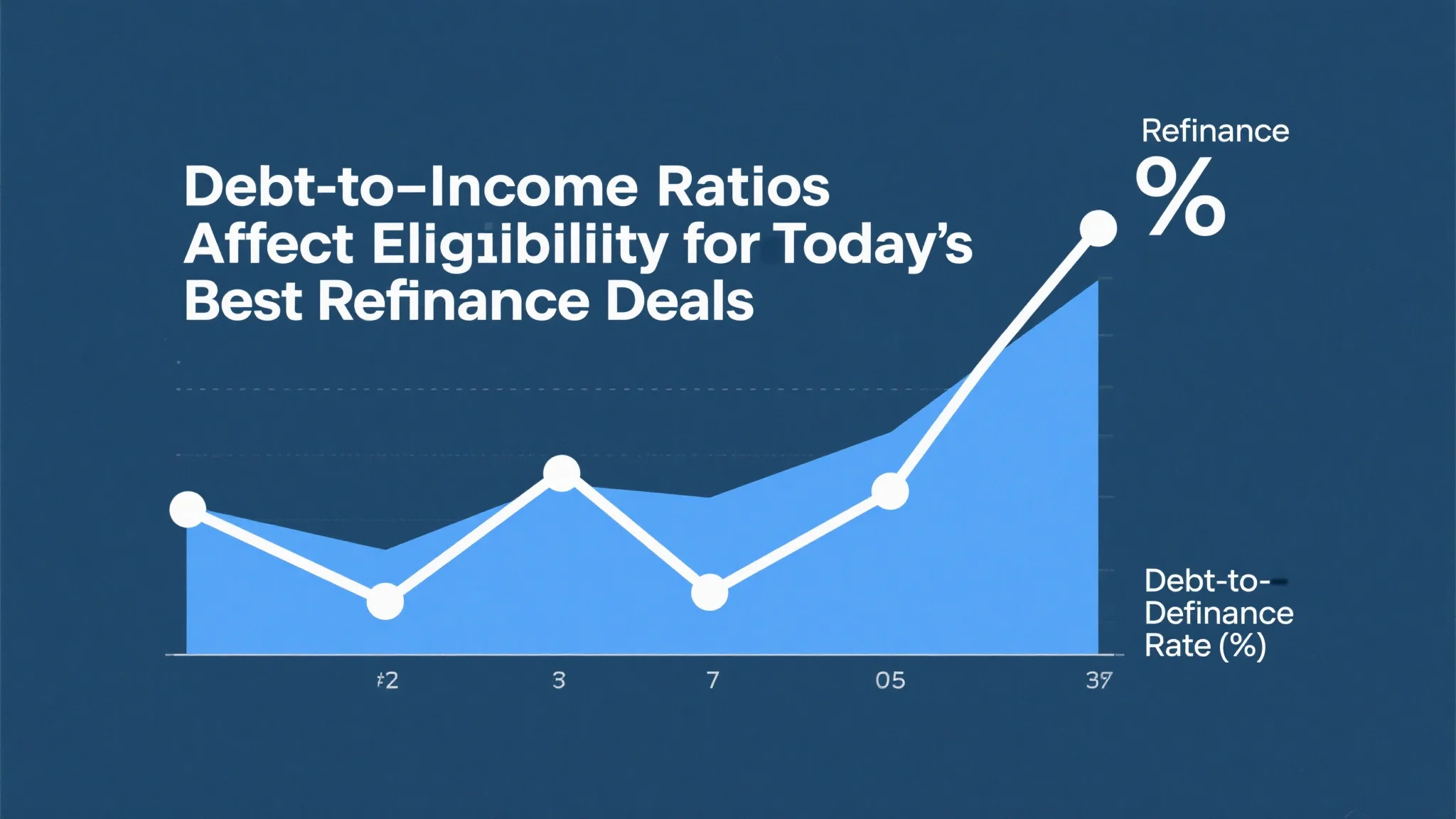Understanding how debt to income refinance calculations impact your mortgage application is crucial for homeowners seeking to capitalize on today’s competitive lending environment. The debt-to-income ratio, commonly referred to as DTI, represents one of the most significant factors that lenders evaluate when determining your eligibility for refinancing opportunities. This financial metric, which compares your monthly debt obligations to your gross monthly income, serves as a primary indicator of your ability to manage additional debt responsibly. In today’s evolving mortgage landscape, where refinance eligibility requirements have become increasingly sophisticated, understanding the nuances of DTI calculations can mean the difference between securing favorable terms and facing rejection. Lenders typically calculate your DTI by dividing your total monthly debt payments by your gross monthly income, then multiplying by 100 to get a percentage. This includes not only your proposed new mortgage payment but also existing obligations such as credit card minimum payments, auto loans, student loans, personal loans, and any other recurring debt obligations. The significance of this ratio extends beyond simple qualification metrics, as it directly influences the interest rates, loan terms, and overall financing options available to you. Most conventional lenders prefer to see DTI ratios below 43% for refinancing applications, though some programs may accept higher ratios under specific circumstances. Government-backed loans, such as FHA refinances, may be more flexible with DTI requirements, sometimes accepting ratios up to 50% or higher when compensating factors are present. These compensating factors might include substantial cash reserves, excellent credit scores, or significant equity in the property. The calculation process itself requires careful attention to detail, as lenders will scrutinize every aspect of your financial profile. Your gross monthly income includes salary, bonuses, commission, rental income, alimony, child support, and other verifiable sources of regular income. However, not all income sources are treated equally, and lenders may apply different calculation methods depending on the consistency and reliability of the income stream. For instance, bonus income might be averaged over two years, while rental income may be reduced by a vacancy factor. Understanding these nuances helps you present your financial picture in the most favorable light possible. The impact of DTI on your refinancing prospects extends beyond simple approval or denial decisions. Even small improvements in your DTI ratio can result in significantly better loan terms, including lower interest rates, reduced fees, and more favorable repayment conditions. This is particularly important in today’s market, where even a quarter-point difference in interest rates can translate to thousands of dollars in savings over the life of the loan. Moreover, maintaining a healthy DTI ratio demonstrates financial responsibility and stability, qualities that lenders value highly when assessing risk. The relationship between DTI and loan-to-value ratios also plays a crucial role in determining your refinancing options, as lenders consider both metrics when evaluating applications. Properties with higher loan-to-value ratios may require lower DTI ratios to compensate for the increased risk, while borrowers with substantial equity may have more flexibility in DTI requirements.

Navigating the complex landscape of refinance eligibility requirements requires a comprehensive understanding of how different types of debt impact your overall financial profile and refinancing prospects. Not all debts are created equal in the eyes of lenders, and the way various obligations are calculated and weighted can significantly affect your DTI ratio and subsequent loan approval chances. Revolving credit accounts, such as credit cards and lines of credit, are typically calculated using the minimum monthly payment required, regardless of your actual payment habits. This means that even if you pay your credit card balances in full each month, lenders will still count the minimum payment toward your DTI calculation. This approach can be particularly challenging for borrowers who maintain high credit limits but low balances, as the minimum payments on these accounts can artificially inflate their DTI ratios. Installment loans, including auto loans, student loans, and personal loans, are generally calculated using the actual monthly payment amount specified in the loan agreement. However, student loans present unique challenges, as lenders may use different calculation methods depending on the repayment status and type of loan. For borrowers in income-driven repayment plans with very low monthly payments, some lenders may use a calculated payment based on the loan balance rather than the actual payment amount. This can significantly impact DTI calculations and may require additional documentation or explanation. Mortgage debt, including your current mortgage payment and any second mortgages or home equity loans, represents another critical component of DTI calculations. When refinancing, lenders will replace your current mortgage payment with the proposed new payment in their calculations, which can either improve or worsen your DTI depending on the new loan terms. The treatment of rental property debt requires special consideration, as lenders typically count the full mortgage payment for investment properties while only crediting a portion of the rental income. This conservative approach reflects the inherent risks associated with rental income, including vacancy periods and maintenance costs. Business debt presents additional complexities, particularly for self-employed borrowers or those with ownership stakes in businesses. Lenders may require detailed financial statements and tax returns to properly assess business-related debt obligations and their impact on personal DTI ratios. The timing of debt payments also matters, as lenders typically focus on monthly obligations rather than annual or quarterly payments. This means that borrowers with irregular payment schedules may need to convert their obligations to monthly equivalents for DTI calculation purposes. Understanding these nuances allows borrowers to strategically manage their debt profile before applying for refinancing, potentially improving their chances of approval and securing better terms. Some borrowers may benefit from paying down certain debts or restructuring payment schedules to optimize their DTI ratios before submitting refinancing applications.
Securing access to best refinance deals 2025 requires strategic planning and optimization of your debt-to-income ratio well before you begin the application process. The most competitive refinancing offers are typically reserved for borrowers who demonstrate exceptional financial stability and low risk profiles, with DTI ratios representing a crucial component of this assessment. To position yourself for the best possible refinancing terms, consider implementing a comprehensive debt reduction strategy that focuses on both immediate improvements and long-term financial health. Start by conducting a thorough analysis of your current debt obligations, identifying opportunities to reduce monthly payments through strategic payoffs or restructuring. High-interest credit card debt should typically be prioritized for payoff, as eliminating these obligations provides dual benefits of reducing your DTI ratio while improving your overall financial position. However, the timing of debt payoffs requires careful consideration, as lenders may require seasoning periods to recognize the impact of recently paid-off debts. Generally, debts should be paid off at least two months before applying for refinancing to ensure the improvements are reflected in your credit reports and DTI calculations. For borrowers with multiple debt obligations, consider the mathematical impact of paying off different accounts. Eliminating a $300 monthly car payment will have a more significant impact on your DTI than paying off a credit card with a $50 minimum payment, even if the credit card has a higher balance. This strategic approach to debt reduction can help you achieve the maximum improvement in your DTI ratio with the available resources. Additionally, consider the potential benefits of debt consolidation, which can sometimes reduce your overall monthly obligations while simplifying your financial profile. However, be cautious about consolidation strategies that extend repayment terms, as these may actually increase your long-term costs despite reducing monthly payments. Income optimization represents another crucial strategy for improving your DTI ratio and accessing better refinancing deals. This might involve timing your application to coincide with salary increases, bonus payments, or other income enhancements. For borrowers with variable income, such as commissioned sales professionals or business owners, careful timing of the application can help ensure that your income documentation reflects your strongest earning periods. Consider working with a qualified mortgage professional who can help you understand the specific income documentation requirements and timing considerations for your situation. The relationship between credit scores and DTI requirements also deserves attention, as borrowers with higher credit scores may qualify for more favorable DTI thresholds. Investing time and effort in credit score improvement before applying for refinancing can provide multiple benefits, including access to better interest rates and more flexible DTI requirements. This might involve paying down credit card balances to improve utilization ratios, addressing any errors on credit reports, or allowing time for positive payment history to accumulate. Market timing considerations also play a role in accessing the best refinancing deals, as lender requirements and available programs can change based on economic conditions and regulatory environments. Staying informed about market trends and program availability can help you time your application for maximum advantage. Working with experienced mortgage professionals who understand current market conditions and lender requirements can provide valuable insights into the best timing and positioning strategies for your specific situation. Remember that the refinancing process itself can take several weeks or months, so planning ahead and optimizing your financial profile well in advance of your desired closing date is essential for success.



